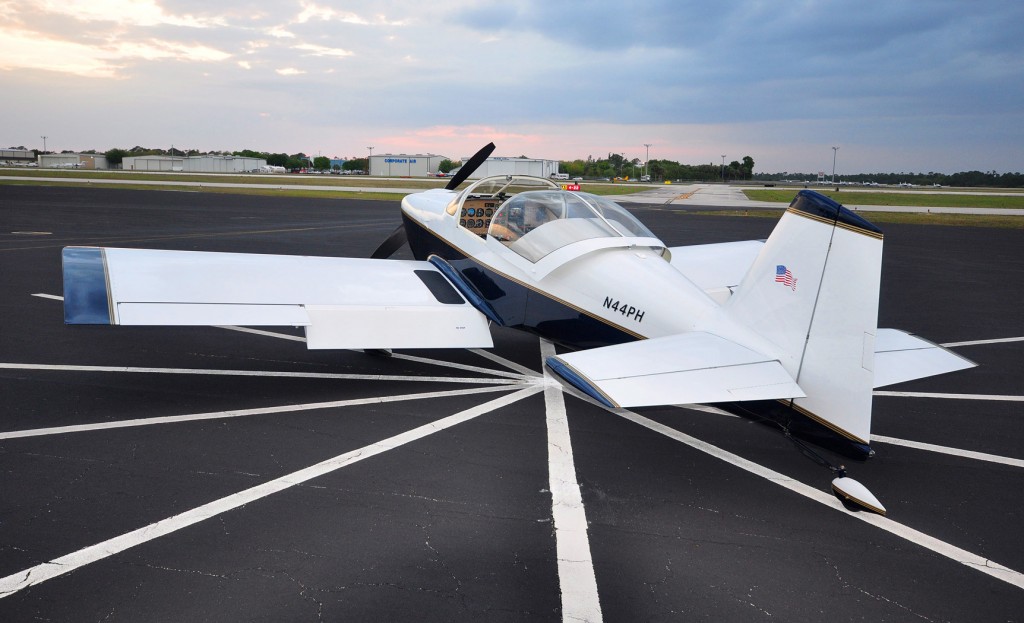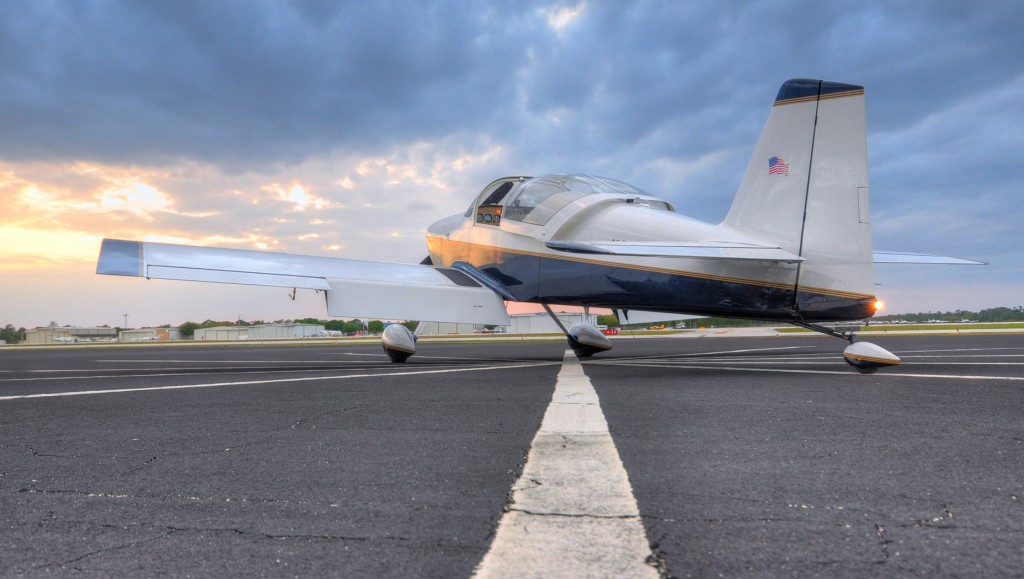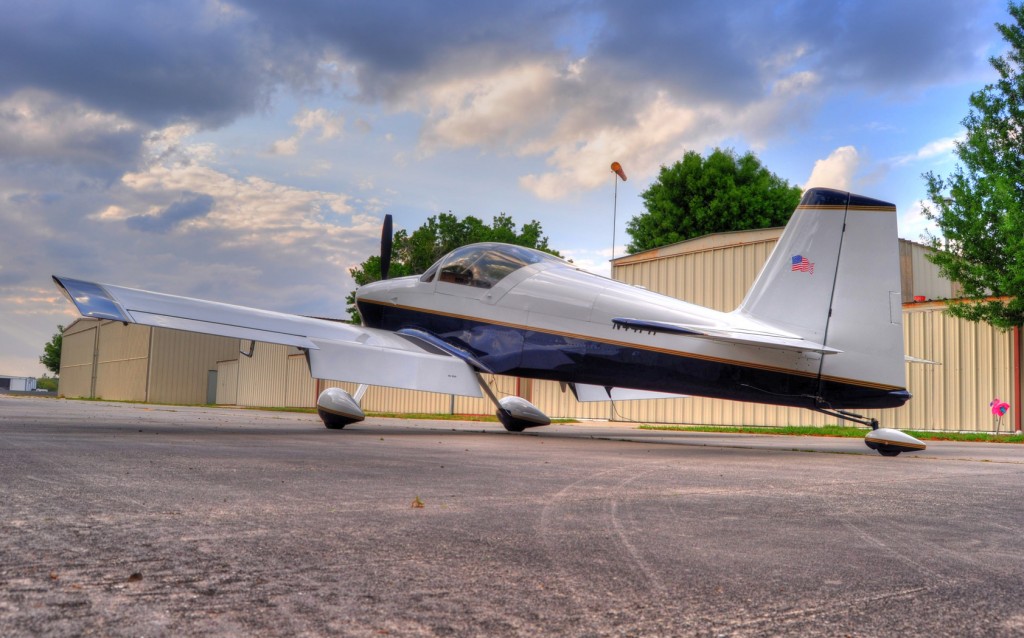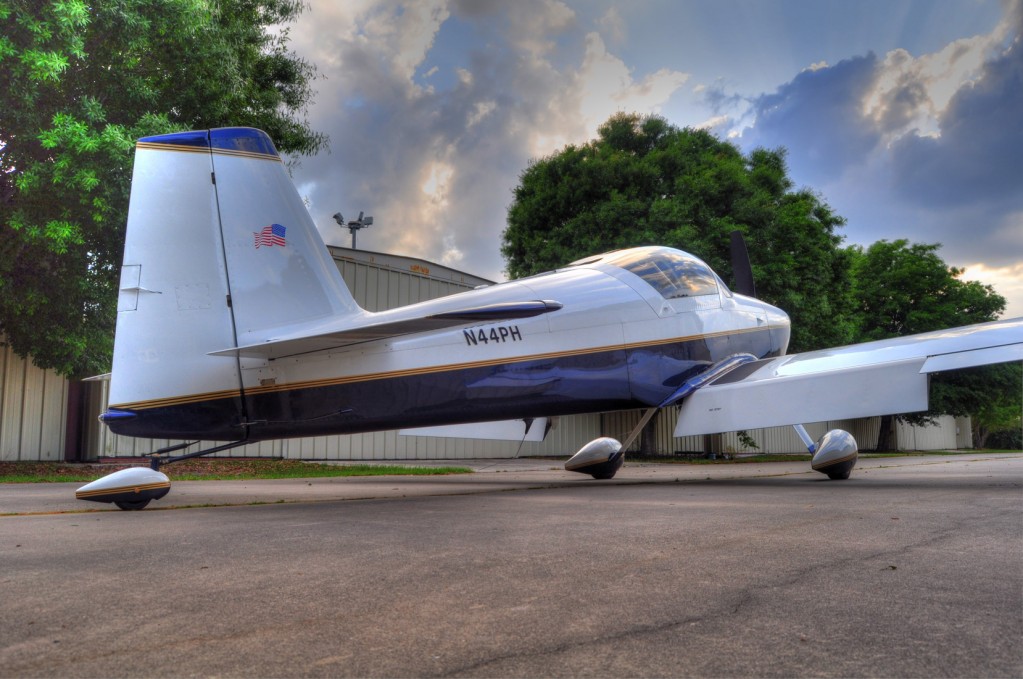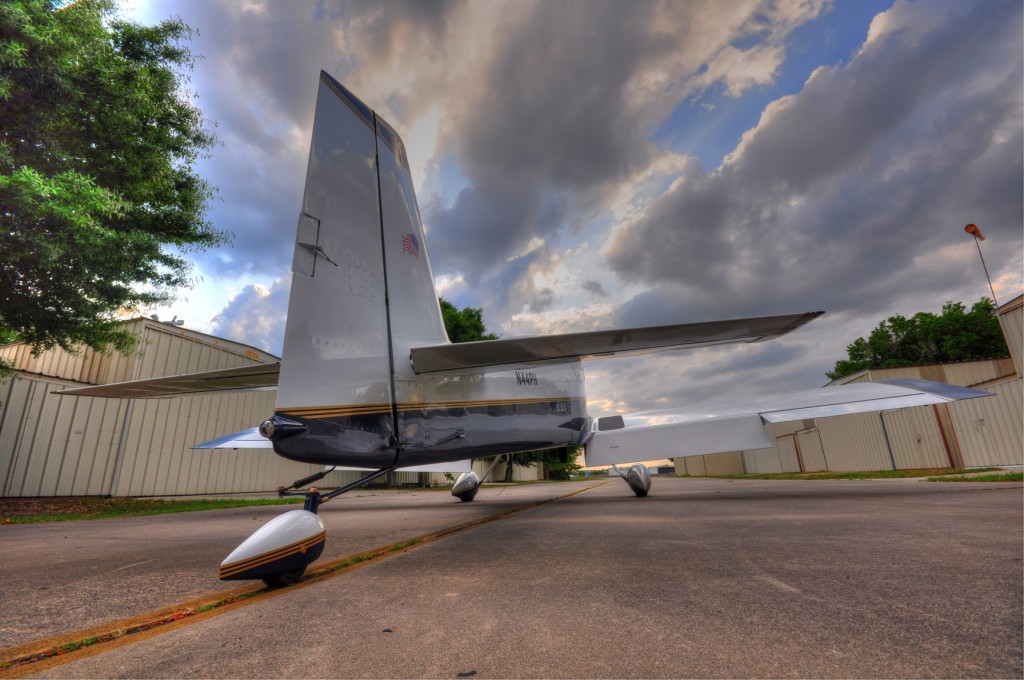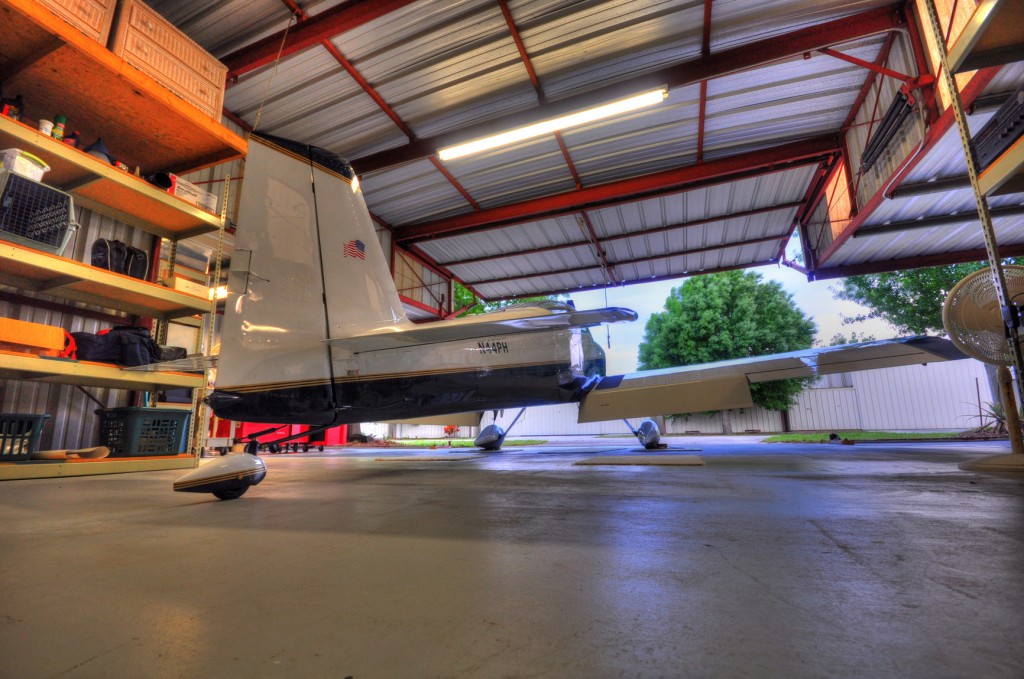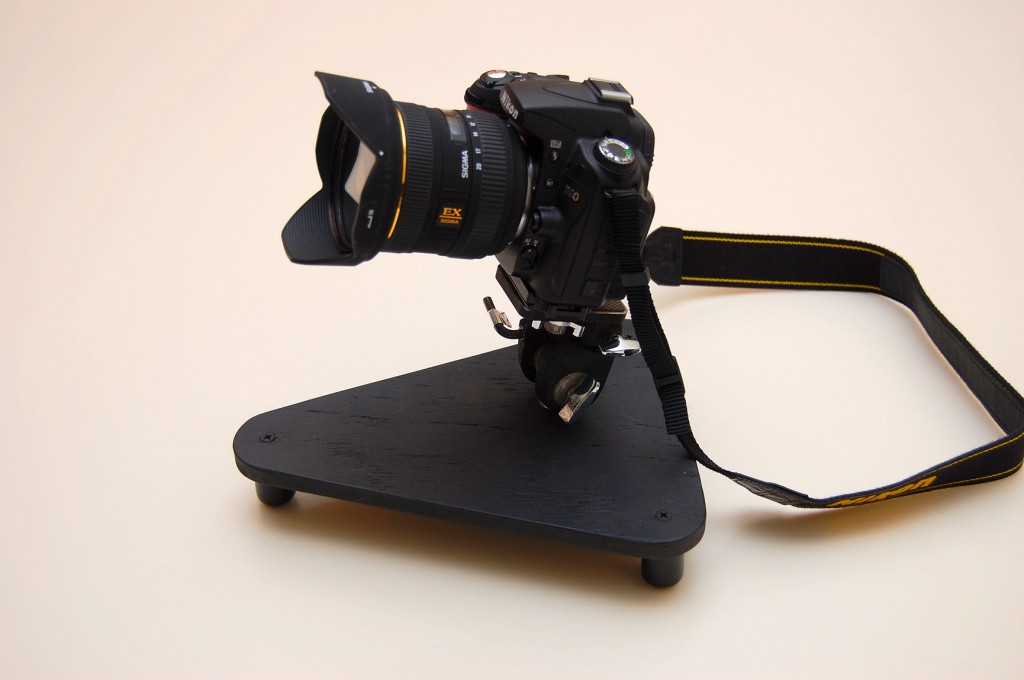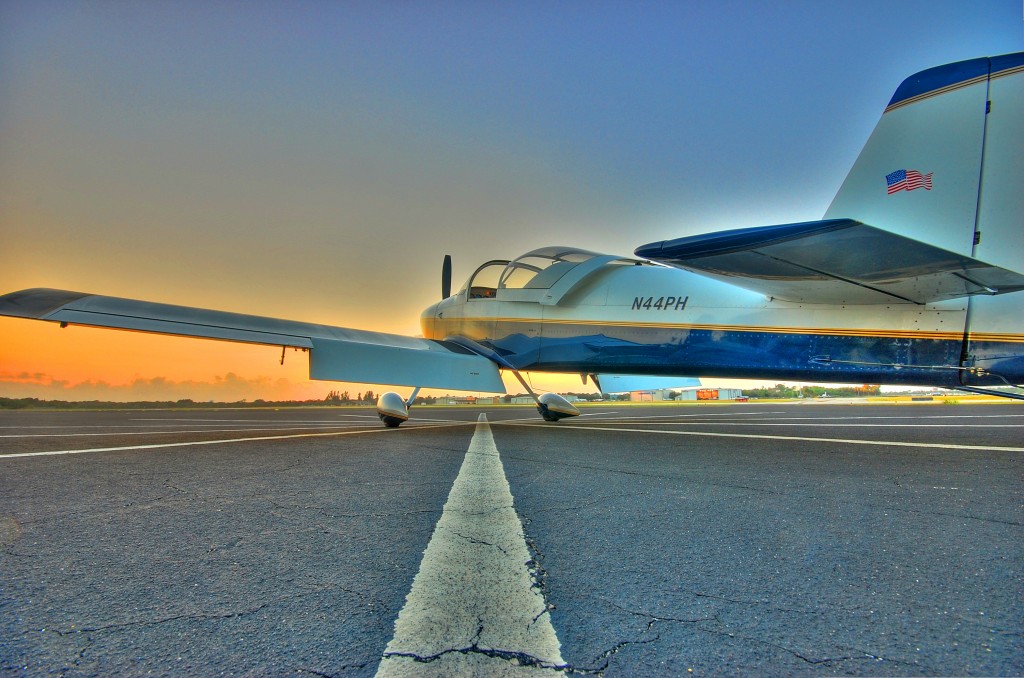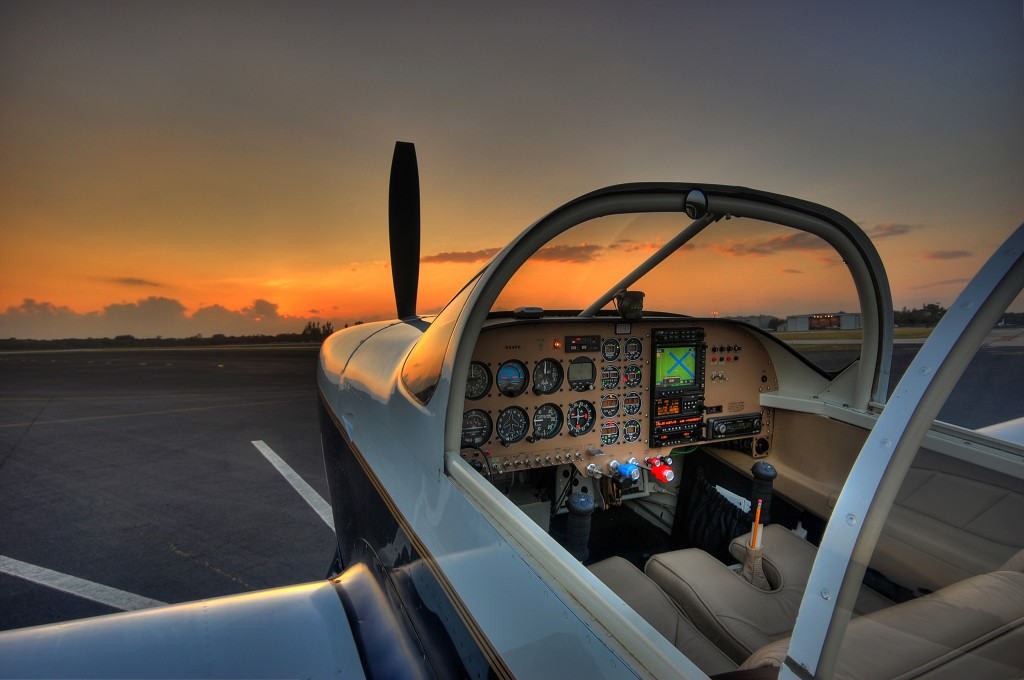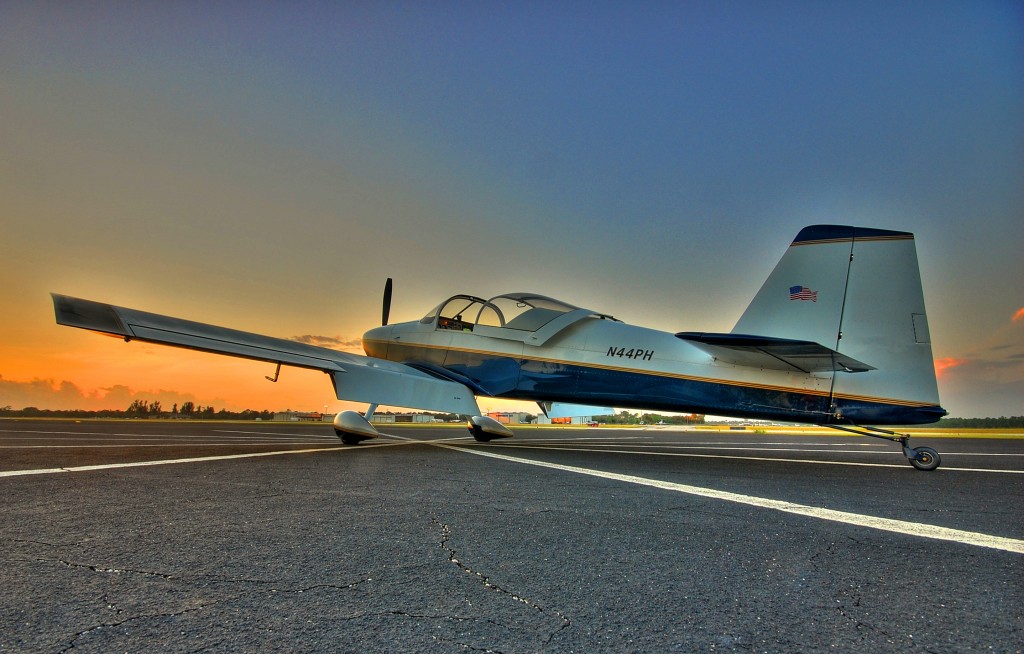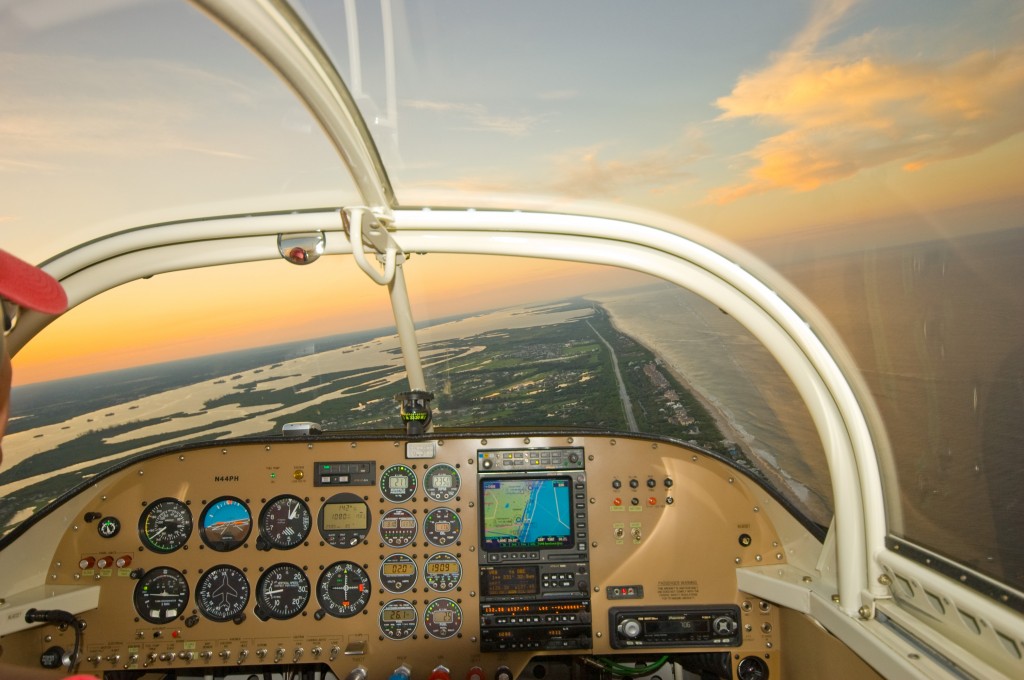An HDR Photo Shoot
Haven't been around these parts in a while, been missing the photography, so today's goal was to get in a solid HDR workout. I have been working on the airplane quite a bit recently so I haven't had much time for the camera. Just a quick review: HDR is high dynamic range photography; it is software based, and used in situations where lighting is high in contrast, such as shooting into a setting or rising sun or into a bright sky. The human eye adapts very nicely to these situations, much better than the camera, so the idea is to take 3 to five images of the same subject, bracketing the exposure so that you end up with one or more underexposed images, same number of overexposed images, and one correctly exposed image. The software then processes the exposures and blends all the images into the final HDR photograph.
So today's subject was my RV-6 at sunset. I had been making a new tail wheel fairing to match the main gear fairings. The tail wheel fairing is completely optional--not necessary for the airworthiness of the aircraft at all. So its purpose is mostly aesthetic; however, there is also an element of cleaning up the aerodynamics of the tail wheel area. Not enough to appreciably reduce any drag or add any speed, but certainly it doesn't hurt--anyway, it sure makes it look about 20 knots faster! I had this fairing since the building days and it was just gathering dust on a shelf in the hangar. So I finally decided to fit it and paint it to match the other pants [make that "wheel" pants - thanks, Britt!] on the airplane. It just adds a nice finishing touch to the airplane in my opinion!
So I took the airplane out to my favorite setting: the compass rose on the airport. I just like the way the rose lines play with the symmetry of the lines on the airplane. I also took a few HDR shots in front of the hangar and inside the hangar which I've included at the end of this post.
Here is a hand-held shot of the airplane on the compass rose to establish a baseline for the HDR shoot. I just used a little fill flash to take out the shadows caused by the fading light.
Notice how the small amount of flash tends to wash out the sky in the background. The object with the HDR exposures is to use only natural light provided by the setting sun and its reflections off the sky and clouds. If you're lucky, the combination of sun angle and cloud cover can make for a very pretty sky at sunset. The problem is that shooting into the sunset tends to underexpose the parts of the airplane that are in the shadows, or you overexpose the sky and sunset. Your eye can see it rather well, but the camera cannot--so HDR tends to simulate what the human eye would see in this situation. Here is an example:
Notice how the sunset bathes the airplane in a nice, warm glow, compared to the rather harsh look of the flash fill.
Here are a few more taken out in front of the hangar:
I took these pictures using a ground pod, an item of photographic equipment whose purpose it to get the camera as low to the ground as possible while keeping the camera steady and in the same relative position to the subject. I'll include a photo of the ground pod at the end of this post to give you an idea of how it works.
Here is an HDR image of the airplane in the hangar. The problem here is the bright light coming through the doorway that contrasts with the shadows on the tail of the airplane. Again, HDR does a nice job handling the high contrast conditions.
On the left is a picture of my homemade groundpod.
It is basically just a piece of plywood with an old tripod head mounted on it. The tripod head allows for camera positioning in 3 planes. The three legs are wooden dowels covered with plastic chair leg ends.
Commercial groundpods sell for several hundred dollars, but really all you need is the simple apparatus pictured, which is made easily and inexpensively in a home workshop.
As always, just click on a photo to see it in full size.
Playing Around with HDR
HDR (High Dynamic Range) photography is relatively new. I have been an amateur photographer all of my life, mostly into 35mm film, but recently I made the switch from digital point-and-shoot to dSLR (digital single lens reflex). Since photo sensors have grown into the mega-pixel range, digital has caught up with, and now, I think, surpassed film quality. It is funny, in a way, to listen to some of the old pro's say that digital is for crazies--film is the true art. Kind of like when color film came on the scene, black and white was the true art form. This is crazy. You can make art in any medium and it's just elitist to say my medium is better than your medium. So too now with HDR. HDR is just for hallucinogenic, drug crazed, newbies. It's never going to be accepted by the in crowd. Again, this is just crazy. HDR was "invented" about 2005, so it's not been around that long. Photographers are just beginning to fully understand its many uses and its future potential, I believe.
The real pro's made the transition to digital years ago, and now I believe they will embrace HDR as well. It's just that purist, egocentric crowd that's resisting the change. Too bad.
I will agree that you can abuse HDR. I have seen some pretty psychedelic photos that are way overdone for my taste, but I'm sure they are very appealing to some. To each their own. I realize that you have to restrain yourself sometimes, because the temptation is to overdo HDR, to the point where the photograph begins to look more like an illustration. So onward with HDR--in moderation.
Basically, HDR increases the dynamic range of exposure. The human eye is 10 times more dynamic than a digital camera. I think the greatest advantage of HDR is that it approximates what the eye sees in high contrast lighting. Have you ever taken a picture that you thought was going to be great and then be disappointed when, after processing, the shadows are too dark compared to how you "saw" the scene? We all have. HDR to the rescue.
I've read criticism that HDR is just a shortcut for proper lighting of your scene. How are you going to "light" a mountain in a landscape shot? Of course, you can't. There's way too much more you can accomplish with HDR to just dismiss it as junk photography. More on HDR later.
This, by the way, is my airplane. I built it. It is my art form. I look at it like an artist envisions his sculpture--mine just happens to be made of aluminum and rivets.
First in Flight
I know, that's the motto of the State of North Carolina (on their plates). Here, I refer to the first posting of an in-flight photograph.
I took this photo from the back of my airplane, an RV-6, using a tripod and a Nikon D40 camera. The lens is a Sigma 10-20mm f/4-5.6. Taken at 1/60 sec., f/5.6, ISO-200, lens set at 18mm. Flash fill was used to illuminate the instrument panel. The camera was fired using a remote. Location is approximately 1,000 feet over the area of Sebastian, Florida.
